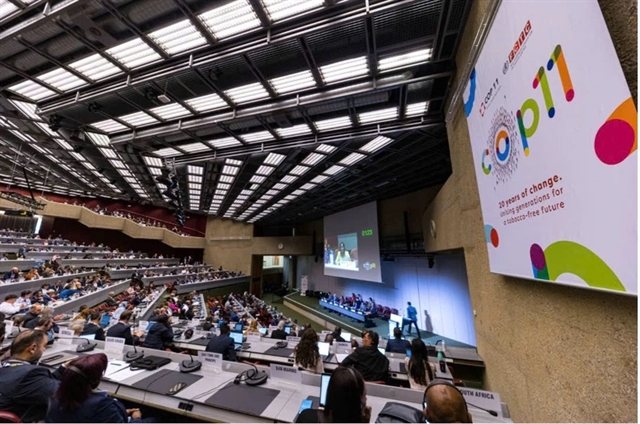 Features
Features

Centuries-old craft in need of support as modern world closes in and popularity declines
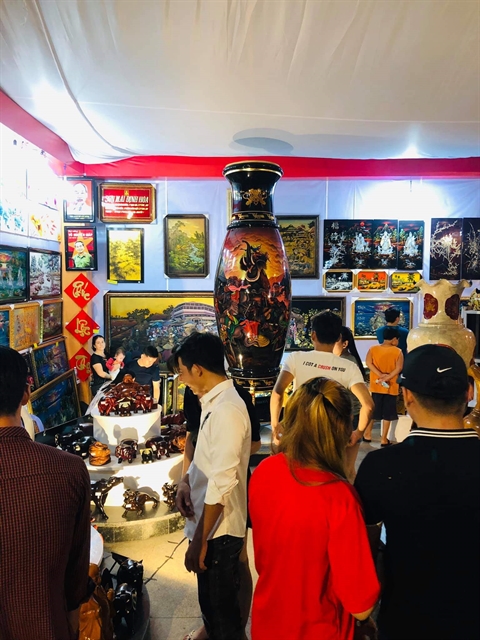
|
| Tương Bình Hiệp lacquer village in the southeastern province of Bình Dương is an attractive tourism destination. — VNS Photo Văn Châu |
HCM CITY — Trương Quan Tịnh, who has 40 years of experience in making lacquerware, is worried about the decline of Trương Bình Hiệp Village in Thủ Dầu Một City in the southern province of Binh Dương.
Tương Bình Hiệp is one of the oldest lacquer villages in Việt Nam, says Tịnh, head of Định Hoà Lacquerware.
“From 1990 to 2000, the village had more than 2,000 households with about 5,000 lacquerware workers. However, now there are only 1,000. Not many young people want to take up the craft.”
In fact, several large facilities are on the verge of bankruptcy due to a lack of long-term investment. Today, only a few dozen households and establishments are involved in the trade, according to Tịnh.
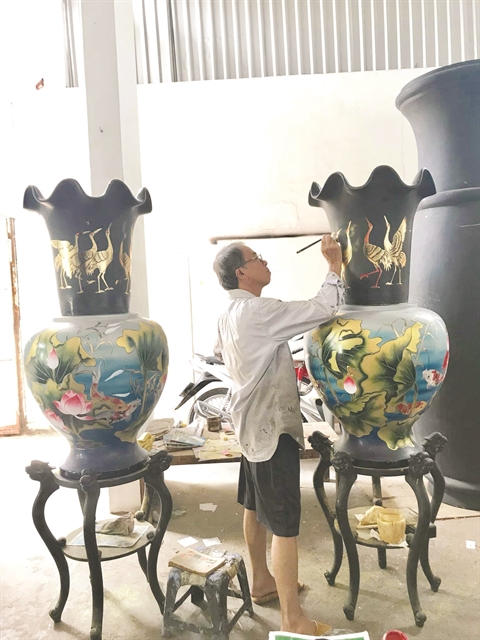
|
| Most young people in the village do not want to take up the traditional craft and instead seek jobs in industrial parks in the province. — VNS Photo Văn Châu |
Long history
Lacquer art has a long storied history in Việt Nam. The traditional material is often used to decorate furniture, boats, weapons and objects of worship. The products are known for their polished, glossy and luxurious finish.
Because of lacquer's prominence in the country's fine arts, it helps to contribute to tourism industry and socio-economic development. For years, local works have been acclaimed by both international visitors and art critics.

|
| Trương Quan Tịnh, head of Định Hoà Lacquerware, says the local lacquer village makes both traditional and modern products. — VNS Photo Văn Châu |
Vietnamese lacquer works are different from those made in other countries like China, Japan and South Korea, where decorative lacquer is more common. Vietnamese lacquer is more versatile and diverse.
Trần Công Thiện, a lacquerware artisan at Tương Bình Hiệp Village, who has 20 years of experience in the art, says that traditional lacquer is a kind of resin extracted from the sơn tree (Toxicodendrom vernicifluum), which is found in the mountains of the northern province of Phú Thọ. The resin is applied in several coats to a wooden base. This is polished to a smooth surface layer which is durable and attractive in look. The lacquer is also painted with pictures, inlaid with eggshells, mother of pearl, gold and other materials, before being processed.
Traditionally, lacquerware colours were mostly black, brown and red. Today, new colours include white, blue, green and yellow to create a modern look. The main materials are wood, bamboo, rattan and, more recently, composite and ceramics.
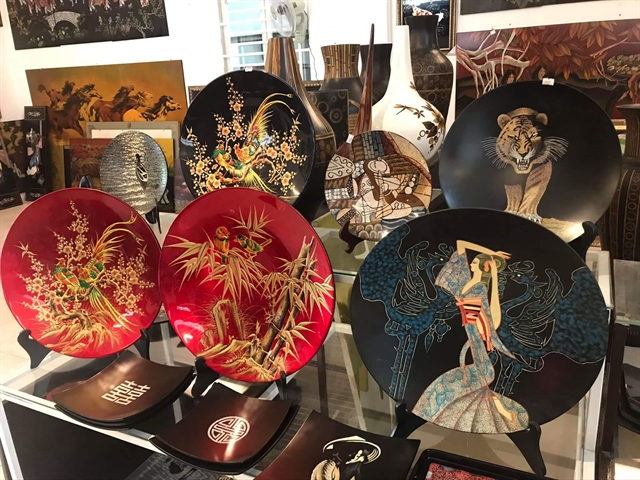
|
| Lacquer works are offered in many kinds of designs, models and colours. — VNS Photo Văn Châu |
In each period, lacquer has significantly contributed to the development of Việt Nam’s fine arts. In a short period of time, the art form has achieved a high status among Việt Nam’s modern arts.
Villagers in Tương Bình Hiệp have preserved their old production process, which involves covering products with 12 to 15 coats of traditional materials, Tịnh says.
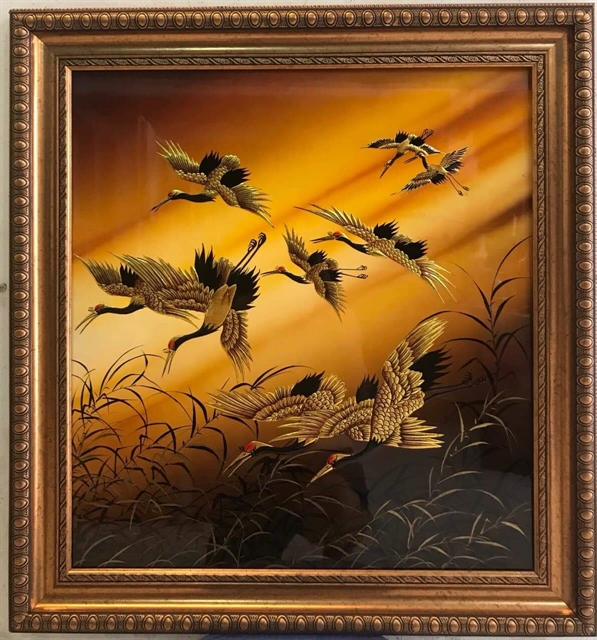
|
| A well-made many-layered lacquered product can keep its colour for up to 400 years. — VNS Photo Văn Châu |
“A well lacquered product can keep its colour for 400 years,” he says.
According to the book, Bình Dương – A New Power of the 21st Century published by the National Politics Publishers in 2003, migrants from the north, including lacquer craftpersons, travelled along the Sài Gòn River and settled in Thủ Dầu Một in the early 18th century.
They passed on their traditional craft to locals who have preserved it ever since.
In 1901, the French rulers in Việt Nam set up a vocational school in Thủ Dầu Một, now the Bình Dương Fine Arts College, to teach carving and lacquerware.
Bình Dương traditional lacquerware became especially popular between 1945 and 1975 with the establishment of Tương Bình Hiệp Lacquerware by artisan Trương Văn Thành, and Thành Lễ lacquerware workshop by artisan Nguyễn Văn Lễ.
The craft requires meticulous skills. To prevent the paint from drying too quickly, the object has to be kept in a cupboard away from wind and high humidity. Spring and the rainy days of early summer are ideal.
To preserve the craft in the village, younger workers need to be professionally trained, Tinh says.
Money is the key to the craft’s survival, he says, adding that the craft will only survive if the villagers can make a living from it.
“It’s of great importance to promote the business of lacquer art as well as the craftwork so we can expand the market for lacquerware. Another important task for us is to encourage high school students to register for courses in lacquerware or enroll at the Bình Dương Fine Arts College,” he says.
Local authorities need to create favourable conditions for vocational training at the Fine Arts College so that young people could enroll in lacquerware courses, according to Tinh.
Preservation
In recent years, the province has provided assistance in brand building, tourism development, and financial support for production facilities for Tương Bình Hiệp lacquer craft village.
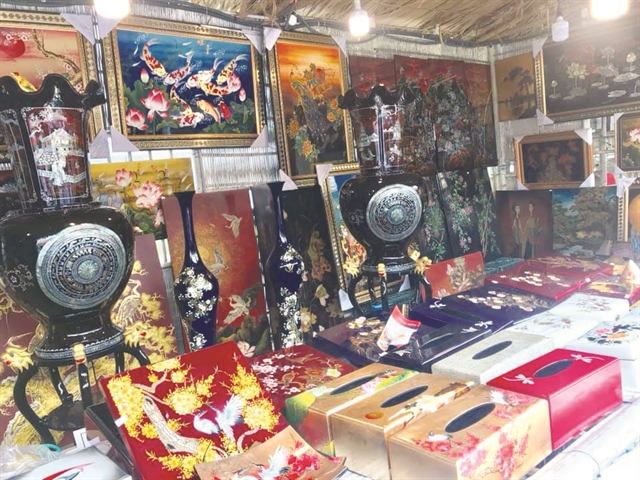
|
| The most common lacquer products are paintings, boxes, vases and pots made with mother-of-pearl or eggshell. VNS Photo Văn Châu |
The People's Committee of Thủ Dầu Một City has also started a conservation and development project for the craft village that combines tourism in the city and surrounding areas.
The project will include infrastructure investment combined with diverse activities in the tourism industry. It will also create better linkages among production facilities and provide financial support to workshops to invest in new environmentally-friendly machinery.
The Thủ Dầu Một People’s Committee says the city will work with local departments and branches in the province to invest in human resource training, trade promotion, and science and technology application. - VNS



